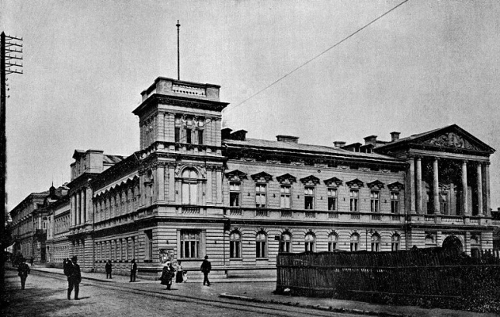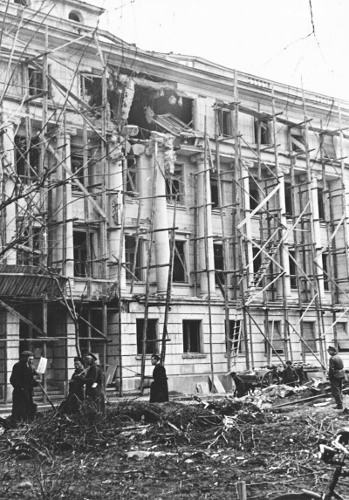3, Dyakon Ignatii Str.

In 1879, at 3, Dyakon Ignatii Street begins the construction of the building of the Ministry of War (today – Ministry of Defence), designed by Arch. Antonin Kolar. As with most of the capital’s public buildings, it echoes European models, while accounting for the Bulgarian specifics and scale, sparing no expenditure. In April of 1885, Prince Alexander I Battenberg issues Decree No. 12, requesting “to transfer from the reserve fund of the military budget to Mr. Stambolov 12 330 Leva for his lot, on which the building of the War Ministry is raised, comprising of 410 meters II”. Originally, the building has only two-storeys, but soon it becomes clear that the administration needs more space and offices. Thus, in the late 1930s, major reconstructions are self-evident. The project for those belongs to arch. Dimitar Tsolov – who remains in the history of Bulgarian architecture as creator of many Bulgarian landmark buildings and complexes, as well as for his important contribution to Sofia’s urban planning and spatial organization. The building occupies an entire block of the street network. Its composition is symmetrical – the offices flanking the roundabout hallway face the inner courtyard. The main entrance is on the northwest facade, to the City Garden – the oldest park of Sofia, predating the Liberation. The row of pillars extending from the second to the third floor adds to the monumentality of the main facade. Also of interest are the other faces of the building – to the north and to the south, for the exquisitely set windows, remarkable for their originality. The sculptural interplay of “mass” and “aperture” of the window slits on the north facade achieves exemplary evocative effect. 
The building’s exterior decoration is by the celebrated sculptor Lyuben Dimitrov, who has also worked on the exteriors of official buildings such as the Bulgarian National Bank, the Ministry of the Interior and the National Library. On the corners of the facade are sculpted some of the greatest rulers of Bulgaria, renowned as skilled strategists and commanders, with numerous victories against the Byzantine and crusader armies – Khan Isperih, Khan Krum, Khan Omurtag, Knyaz Boris, the tsars Simeon, Samuil, Kaloyan and Ivan Assen II.
Interior designer is one of Europe’s foremost sculptors, working and living in Bulgaria – the Ukrainian Mikhailo Parashchuk. The main entrance has a decorative grate. Similar decorative element are found in only one other place in Bulgaria – the entrance to the Bulgarian National Bank, also his.
The stained-glass windows of the Ministry of Defence are produced after the design of Georgi Atanasov in 1941. Preserved to this day, they mark a singularly important stage in the development of this genre in the Bulgarian monumental decorative arts, the traditions of which are broken after the war.
During the Second World War, the Ministry of Defence is affected by the bombing raids on Sofia. The building is hit and suffers fire, but despite the damage, much of its furnishings – wooden panelling, parquet floors and chandeliers, as well as original Persian carpets, custom-made in Iran – are preserved to this day.